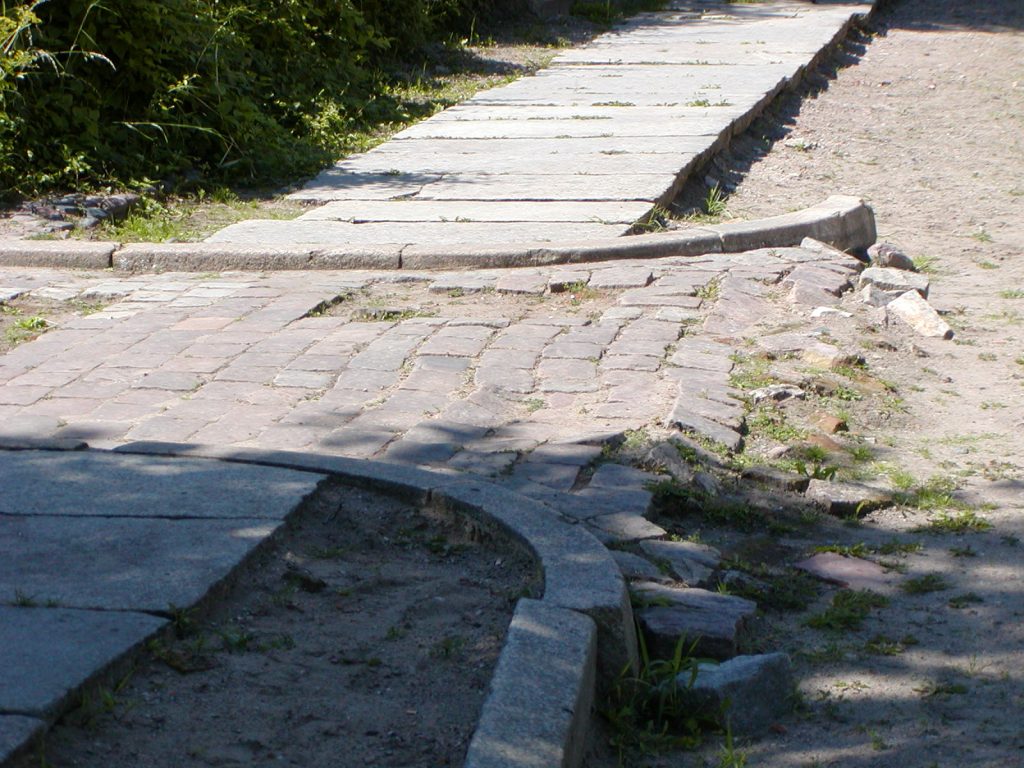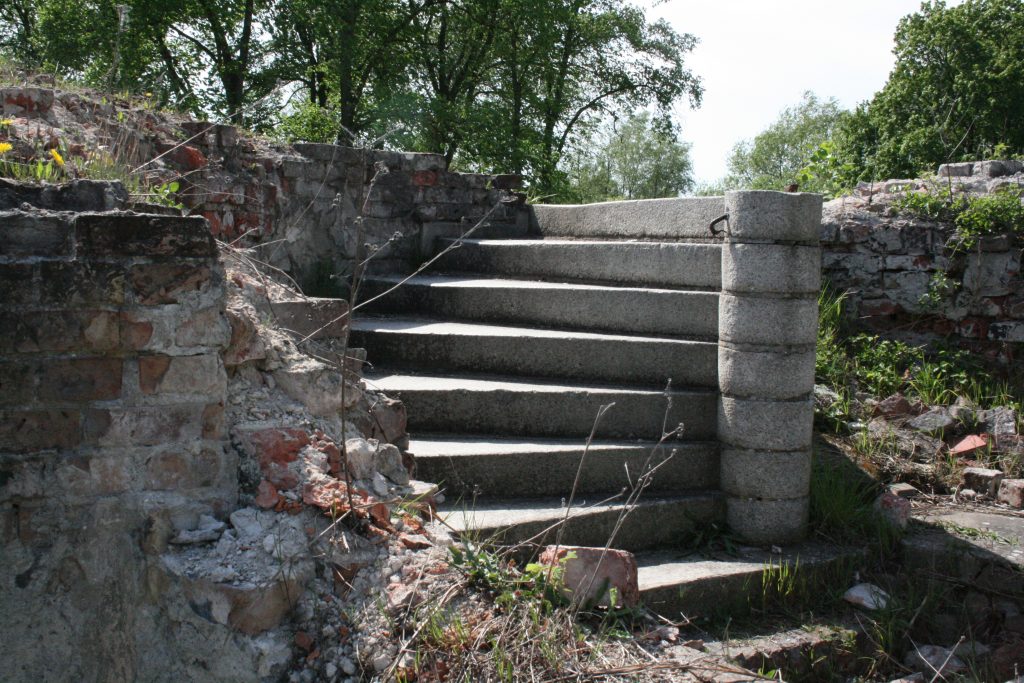The ruins of Kostrzyn – Poland’s Pompeii on the Oder
Walls protrude from the tangled undergrowth. Cobblestones cut through the grass with kerbstones delineating old pathways and tracks. Ahead, steps spiral up to what once must have been a grand doorway. A stone plinth stands empty, the statue it once held long since disappeared. Then another plot, this time with a cross – presumably the remnants of an old church. Opposite it, a staircase leads to a former fort. You can still see a tiled bathroom, a relic from a bygone era.
All that remains of the old fortified town of Kostrzyn are its streets and foundations, a few city gates and its mighty bastions. It’s a gloomy yet formidable place; Poland’s very own Pompeii. The town, located strategically between the Warta and Oder rivers, was once an important Prussian fortress and was even made the capital of Brandenburg’s Neumark region. Up until its fall, the a garrison city was home to some 24,000 people, with factories, administrative bodies and even three tram lines.
In 1730, Frederick the Great of Prussia – then just the Crown Prince – was imprisoned in Kostrzyn after he was caught plotting to flee to Great Britain, then a treasonable offence. The royal witnessed his fellow conspirator’s execution from the fortress dungeon. In the Second World War, Kostrzyn served as a strategic point of resistance against the advancing Soviet Army. The fighting here was fierce and the once lively city soon lay in ruins. In the post-war period when the Oder-Neisse line became the official border between East Germany and Poland, the ruins fell into a state of even greater disrepair.
Since the fall of the Iron Curtain and the opening of the border in the 1990s, there has been a growing sense of optimism in Kostrzyn. The Berlin Gate – one of the city’s major landmarks – has been restored to its former glory and now houses an information centre. Tourists can visit the catacombs of the ancient bastions or spend an afternoon in the vast forests and floodplains that surround the city, a national park crisscrossed by canals and swamps and home to 240 species of birds. The new town, with its small natural history museum, is also well worth a visit. You can rent bicycles here to explore the national park and old town.





Would you mind sharing with me how one might get from Krakow Poland to Kostrzyn. I will be traveling there to meet up with a tour group and I can not seem to locate a way to purchase rail tickets from Krakow to Kostrzyn. The polish rail Ninja said they do not handle the selling of tickets between the two location. If so then who does… thank you